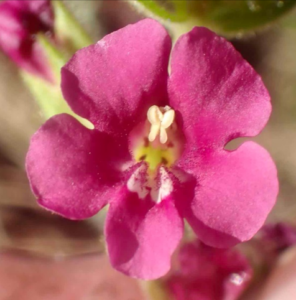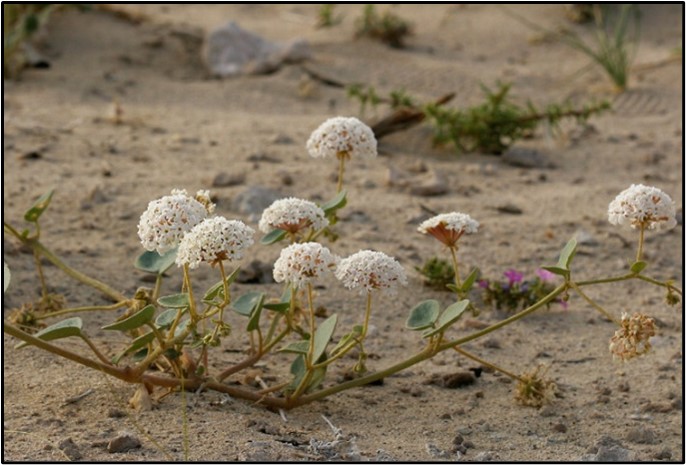Ventura County Locally Important Species Program
What’s New in the Locally Important Species Program 2024-2025!

Ventura County 2024-2025 Locally Important Species Final Plant List and new LIS GIS Layers
In 2024-2025, there were no submissions to the LIS Animal List. However, three species were identified for removal in an early 2024 review bringing the list to eleven species. The species removed from the LIS list were the Pacific Lamprey (Entosphenus tridentatus) California Glossy Snake (Arizona elegans occidentalis and the Ventura shoulderband snail (Helminthoglypta venturensis).
The California Native Plant Society (CNPS) submitted two species in 2024-2025 for the County’s LIS plant list and one extirpated species, Phalaris lemonii or Lemmon’s Canarygrass for the County’s watchlist that has not been seen since the development of the Mirror Lake area in Oakview (adjacent to what is now Mirror Lake Ave). The LIS Plant Committee met and reviewed the evidence presented for Diplacus bolanderi (otherwise known as Bolander’s Monkeyflower) and Layia hieracioides (also referred to as Tall Tidytips) and found that both plants met the LIS criteria for a locally rare species. Ten plant species currently on the LIS list were removed because they no longer met the LIS plant criteria. The ten species removed in 2024-2025 can be found in the attached summary pdf here.
Release of the Updated LIS Lists with New Fields, Formats, and GIS Layers
The LIS lists are now more user friendly for the California Environmental Quality Act (CEQA) biological assessment reports! All LIS lists contain additional life history information for each species to help streamline data needs for applicants and consultants. This data also has been geo referenced by United States Geological Survey (USGS) quadrangles based upon where the species was documented in the county to help biologists know when these species need to be added to their assessment tables and to brush up on their LIS identification skills before those field surveys! See 2024-2025 Locally Important Species Lists and GIS Layers section below for more details.
New Excel File Species Data Submission Form Available!
For multiple species submissions, an excel format-based form is now available on the website under the Update Process section. All elemental occurrences to be submitted as separate documentation must be based on one of the following sources: data from peer review publications, CDFW CNDDB occurrence records in the Rarefind viewer, herbarium records, or an approved iNaturalist record within the CDFW CNDDB iNaturalist program page that has been screened by CDFW biologists.
Locally Important Species Watch List
Some years the LIS Plant Review Committee finds there are plant species that did not have enough reliable data or other information available for them to be placed on the LIS list. To increase awareness about those species when observational and specimen collection data is lacking, the County provides for use by the approved Qualified Biologists and other trained botanists, a “Watch List” of these species. See the Watch List Species section below that explains what the watch list is and clarifies in more detail how it is used outside of the LIS program and CEQA review.
Plant Collection Permits
To help promote and encourage the collection of more data on the status of LIS and other rare plants within Ventura County, the County’s approved Qualified Biologists who carry out the primary targeted surveys for LIS are encouraged to obtain a plant voucher collecting permit from the California Department of Fish and Wildlife. Local botanist’s, members of the California Native Plant Society (CNPS) local chapter, and CNPS certified botanists are encouraged to obtain this permit. If new occurrences are officially confirmed in the County, they are submissible to the LIS program. There are numerous species believed to be extirpated from the County that are on the County’s watch list and many species on the LIS list that possibly are more abundant than first thought. The collection of plant specimens and obtaining a plant collection permit, helps deepen our understanding about Ventura County’s unique vegetation communities.
Ventura County’s Locally Important Species Program
Ventura County’s unique location on the California coastline spans one of only two of the east-west transverse mountain ranges in North America whose biogeography serves as a transition zone between California’s Central and South Coast regions. Ventura is an area that has experienced considerable geologic and climatic changes that have influenced the region during its recent prehistory. As an example, these environmental conditions and geography have created a variety of localized “microclimates” and habitat conditions where several small “relict” populations of plant taxa persist throughout areas of the County, which were presumably more widespread in the past. These factors contribute to surprising flora diversity, where the County contains 25% of all native plant taxa known to occur in California but represents only 1% of its landmass (Magney 2023).
In the late 1990s and early 2000s, local and regional biological experts recognized the unique environmental conditions and diversity present in the Ventura County and worked with the County’s Planning Staff and local leaders to establish protections for the County’s animal and plant species, that were associated with limited, localized, and/or rare habitat types and environmental conditions. The result of those efforts resulted in language within the County’s 1988-2020 General Plan regarding the preservation and protection of Locally Important Species and Natural Communities (Section 1.5-Biological Resources, Goal 1.5.1).
Ventura County’s 2040 General Plan retains those goals and policies today, where Locally Important Species are identified as significant biological resources to be protected from incompatible land uses and development (see Goal COS-1 and Policy 1.1). To ensure consistent identification of Locally Important Species, the listing criteria and process are established in the Biological Resources Section of the Initial Study Assessment Guidelines (ISAGs). Together the General Plan and ISAGs require that the project’s potential impacts to Locally Important Species be included in all biological resource assessments conducted by County Approved qualified biologists for California Environmental Quality Act (CEQA) review.
2024-2025 Locally Important Species Lists and GIS Layers
CEQA requires that a proposed project evaluate all reasonably foreseeable environmental impacts, which includes impacts on any federal, state, or locally designated special status species, including the County’s LIS. These species are evaluated in accordance with the County’s ISAGS when potential special status species that may occur on the project site. This analysis is included in the initial studies of biological assessments conducted for the project prior to the ISAG’s analysis.
2024-2025 Locally Important Animal List
2024-2025 Locally Important Plant List
Locally Important Species Criteria and List Update Procedures
The Planning Division periodically reviews and updates the LIS List. The Planning Division maintains a list of plants and animals that meet the criteria for LIS and updates the list on an annual basis if changes are warranted.
Proposals for additions to or removals from the LIS List is conducted by filling out a Data Form below and submitting it to the Planning Division with information that supports the submitted statements about a species’ populations, range, important habitats, and status.
- Animal Data Form
- Plant Data Form
- Excel Data Form (This excel form is for the submission/removal of multiple plant species).
Important Notes for Submissions:
Please include citations for sources of information that support statements about a species’ populations, range, important habitats, and status. Species Data Forms that do not provide citations or supporting documentation will not be considered by the reviewers.
A) All species occurrence data must include one of the following types of documentation: 1) published in a peer review journal or Consortium of California Herbaria, or historic county records/collections; 2) For animal occurrences or a new plant occurrence not yet documented in the Consortium of California Herbaria, provide a documented California Natural Diversity Database (CNDDB) PDF report CNDDB Field Survey Form, or iNaturalist verification via CDFW CNDDB program page to be submitted as separate documentation. The Planning Division encourages professional botanists to get a plant voucher collecting permit from the California Department of Fish and Wildlife so that species on the LIS or Watch list can be submitted to an approved herbaria. This allows for species to be officially removed from the County’s LIS list when new occurrences are officially confirmed in the unincorporated areas of the county or for us to learn more about our watch list species.
B) Species considered extirpated will not be considered for listing on the County’s LIS but may be considered by the Review Committee for addition the County’s Watch List.
C) All species with occurrence data within Ventura County, except the Channel Islands will be considered.
Data forms can be emailed to Abigail Convery at Abigail.Convery@ventura.org or mailed to:
County of Ventura
Attn: Abigail Convery
Ventura County Planning Division
Hall of Administration
800 S. Victoria Ave. L#1740
Ventura, CA 93009-1740
Locally Important Species Watch List
The “Watch List” is meant to serve as a field reference for qualified practitioners for potential rare species when observational and specimen collection data is lacking. If these species are encountered in the field, the botany field/community needs a herbarium specimen to be collected and submitted, because not enough is known about the plant’s distribution, life history, or taxonomy in the county. The “Watch List” is posted to the County website and is shared with other organization’s websites such as the California Native Plant Society Channel Islands Chapter for informational purposes and is not part of the Locally Important Species List nor is it used for CEQA review purposes.


